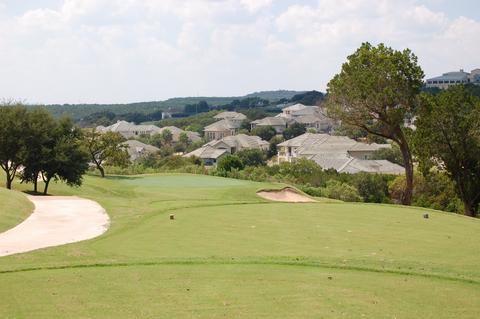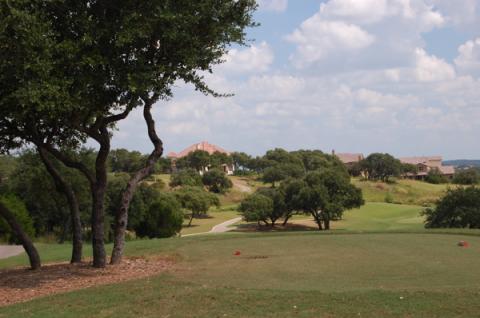
Home prices in communities like Falconhead near Austin, TX, have held up because of job growth at companies in the area and Austin's popularity with retirees.
I reconnected yesterday with an insurance agent I hadn't spoken with in 25 years. Alan sold me disability and life insurance policies back in the early part of my career, but circumstances change, and now I am looking to either convert the policies or just let them lapse. I called him to discuss my options.
In the course of conversation, we got around to the current housing market, and Alan said an interesting thing: "I don't think people can go wrong buying a retirement home, even now." Noting popular places like Miami, San Diego and Las Vegas, whose housing markets have tanked, I suggested that some people could have gone very wrong if they had bought there three years ago. "Look," he replied, "this baby boomer
Alan went on to explain that he had purchased a second home in Tampa, FL, a few years ago and runs his business from there and from his Long Island, NY, house, splitting his time pretty equally between both. He is 61 now and plans to move south permanently in a few years.
Alan works with many baby boomers at or nearing retirement, so his feel for market trends is worth considering. First, and most obvious, numbers are on his side. The 75 million or so boomers, arguably the wealthiest generation in history, are between the ages of 46 and 62. Sure, some will stay put in retirement especially if their homes are paid off and their kids and friends are nearby. But many more, like a couple from Ohio I am working with, would rather play golf than shovel snow in February and, anyway, their children and some of their friends have moved away.
Second, and perhaps more important to the argument, is that this generation is self possessed, selfish really. I can say that because I am a member of the tribe. We have always wanted what we wanted and when we wanted it. And whenever we have latched onto something, as Alan, a leading edge boomer, argued, "prices have always gone higher."
Remember when water from the tap was good enough and safe enough for us all? Then we had the great
There is certainly some evidence in southern real estate prices to support the contention that baby boomers are having a salutary effect on the markets. A number of areas I have visited in the last couple of years are seeing almost housing-boom type price increases despite housing-bust conditions in the rest of the country. In December, a Money magazine article indicated that Wilmington, NC, had seen a 9.2% increase in real estate prices over the prior 12 months. Asheville, NC, was even higher, at 10.9%, and Austin, TX, close with 10.8%. Richmond, Charlotte and Raleigh also showed strong price increases.
For sure, job growth in these metropolises was probably more important to prices than were retirees. Demand for homes there, especially new ones, has been high, and retirees have filled a more supplementary role in terms of real estate purchases than a primary one. But with the brakes now being applied to
I think of a couple living in the Boston metro area whose heart has been set on a retirement in Asheville, NC. Last year, homes in some areas of the Boston market depreciated 5% while in Asheville they increased 10.9%. More of the same in the next few years, and our Boston couple might be priced out of a home in Asheville or have to settle for a much different one than their sights are set on.
If your hearts and minds are set on moving south, don't hold out for the last dollar on your primary home. Deal with the fact your home is likely not worth what it was last month, let alone last year or two years ago. Accept any fair offer before the spread between your eventual selling price and what you will have to pay in the south a few years hence widens beyond your ability to pay the difference.
The harsh but appropriate old line from the stock market is worth repeating here: "Pigs may get fat, but hogs get slaughtered."
Note: I am currently working with a few couples to identify the areas and communities that best match their lifestyle criteria. If I can help you, please send me a note. There is no cost or obligation whatsoever.





 the plane, then play the course with your heads literally in the clouds. Have a casual lunch overlooking the runway, cheering your fellow pilots as they land, and then make your reservation for dinner in the expansive log cabin clubhouse. The clubhouse is closed for the winter season, but you are a 10-minute drive down the mountain and more than a half hour into Asheville. You are such special members that Mountain Air's general manager is happy to call in the chef and get the huge stone fireplace going. After a bottle of wine and a rich dinner, you can stoke your own embers back at your house on the mountain.
the plane, then play the course with your heads literally in the clouds. Have a casual lunch overlooking the runway, cheering your fellow pilots as they land, and then make your reservation for dinner in the expansive log cabin clubhouse. The clubhouse is closed for the winter season, but you are a 10-minute drive down the mountain and more than a half hour into Asheville. You are such special members that Mountain Air's general manager is happy to call in the chef and get the huge stone fireplace going. After a bottle of wine and a rich dinner, you can stoke your own embers back at your house on the mountain. 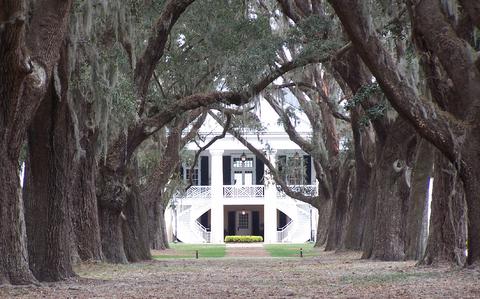 community of mostly six figure homes and majestic live oaks. Then play an uncharacteristic but terrific Pete Dye course along the banks of the Ogeechee River. Beg the management of the Plantation to let you spend the night in either Clara (Mrs. Henry) Ford's former bedroom or the old man's room. Don't waste too much time looking for the secret passageway Henry allegedly used to make his way to a love nest 100 yards across the lawn (his, ahem, "laboratory" he called it). Dinner is in the stately Main House, down a flight of stairs from the Fords' bedrooms.
community of mostly six figure homes and majestic live oaks. Then play an uncharacteristic but terrific Pete Dye course along the banks of the Ogeechee River. Beg the management of the Plantation to let you spend the night in either Clara (Mrs. Henry) Ford's former bedroom or the old man's room. Don't waste too much time looking for the secret passageway Henry allegedly used to make his way to a love nest 100 yards across the lawn (his, ahem, "laboratory" he called it). Dinner is in the stately Main House, down a flight of stairs from the Fords' bedrooms.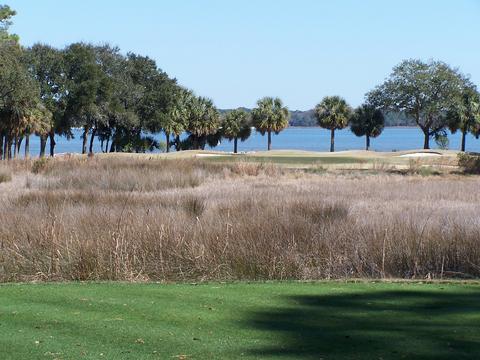 dramatic views of the marsh and Hilton Head Island beyond. After golf, take your personal golf cart - they typically come with the purchase of a home -- to the Daufuskie Island Resort just five minutes away. Try for a seat at the windows overlooking the ocean in the resort's stately dining room. If you haven't had your fill of golf, time your afternoon round at Nicklaus' Melrose course, a fine early example of his work, so that you are coming down the oceanfront 18th at sunset. Alternately, get a his-and-her massage at the resort's renowned Breathe Spa. If you haven't collapsed with exhaustion by dinnertime, head for the funky Marshside Mama's, one of only a few eateries on the island.
dramatic views of the marsh and Hilton Head Island beyond. After golf, take your personal golf cart - they typically come with the purchase of a home -- to the Daufuskie Island Resort just five minutes away. Try for a seat at the windows overlooking the ocean in the resort's stately dining room. If you haven't had your fill of golf, time your afternoon round at Nicklaus' Melrose course, a fine early example of his work, so that you are coming down the oceanfront 18th at sunset. Alternately, get a his-and-her massage at the resort's renowned Breathe Spa. If you haven't collapsed with exhaustion by dinnertime, head for the funky Marshside Mama's, one of only a few eateries on the island.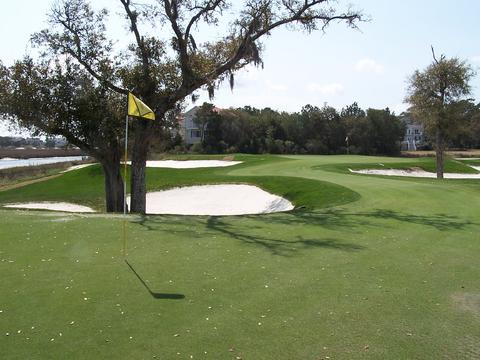 course at Pawleys, with a back nine that slinks along the dramatic marsh and features the connected 13th and 16th greens (pictured); or Greg Norman's less dramatic but finer conditioned layout for the Reserve. No matter which, finish your round in time to take lunch at the Caledonia Golf and Fish Club, for the endless views across the marsh, the efficient if bustling service, and the wide range of menu choices (the fried stuff is sinfully good). Take your after-lunch drink out on the rocking-chair-lined veranda that almost literally hangs over the putting surface of the 18th, and join others in cheering or, in jest, jeering those who three putt the enormous green. Bring a camera if you decide to play the course; the azaleas should just be starting to pop. For dinner, choose any of the eponymous and excellent restaurants in Pawleys Island - Frank's, Austin's, or Louis'.
course at Pawleys, with a back nine that slinks along the dramatic marsh and features the connected 13th and 16th greens (pictured); or Greg Norman's less dramatic but finer conditioned layout for the Reserve. No matter which, finish your round in time to take lunch at the Caledonia Golf and Fish Club, for the endless views across the marsh, the efficient if bustling service, and the wide range of menu choices (the fried stuff is sinfully good). Take your after-lunch drink out on the rocking-chair-lined veranda that almost literally hangs over the putting surface of the 18th, and join others in cheering or, in jest, jeering those who three putt the enormous green. Bring a camera if you decide to play the course; the azaleas should just be starting to pop. For dinner, choose any of the eponymous and excellent restaurants in Pawleys Island - Frank's, Austin's, or Louis'.